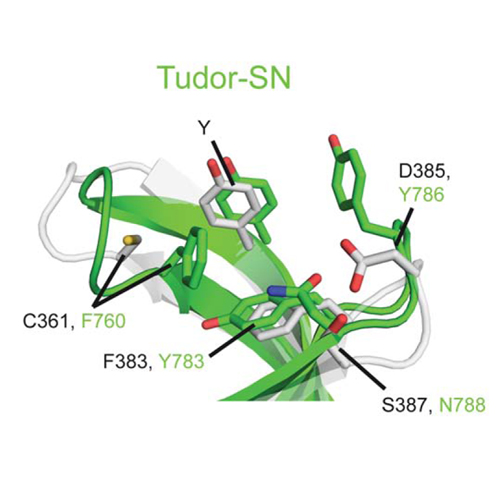Structure of an atypical Tudor domain in the Drosophila Polycomblike protein
28-Jul-2010
Protein Science, 2010, DOI: 10.1002/pro.476, 11 published on 28.07.2010
Protein Science, online article
Post-translational modifications of histone tails are among the most prominent epigenetic marks and play a critical role in transcriptional control at the level of chromatin. The Polycomblike (Pcl) protein is part of a histone methyltransferase complex (Pcl-PRC2) responsible for high levels of histone H3 K27 trimethylation. Studies in Drosophila larvae suggest that Pcl is required for anchoring Pcl-PRC2 at target genes, but how this is achieved is unknown. Pcl comprises a Tudor domain and two PHD fingers. These domains are known to recognize methylated lysine or arginine residues and could contribute to targeting of Pcl-PRC2. Here, we report an NMR structure of the Tudor domain from Drosophila Pcl (Pcl-Tudor) and binding studies with putative ligands. Pcl-Tudor contains an atypical, incomplete aromatic cage that does not interact with known Tudor domain ligands, such as methylated lysines or arginines. Interestingly, human Pcl orthologs exhibit a complete aromatic cage, suggesting that they may recognize methylated lysines. Structural comparison with other Tudor domains suggests that Pcl-Tudor may engage in intra- or intermolecular interactions through an exposed hydrophobic surface patch.











